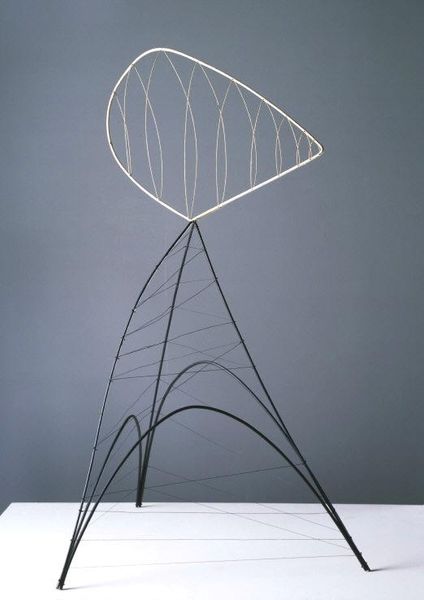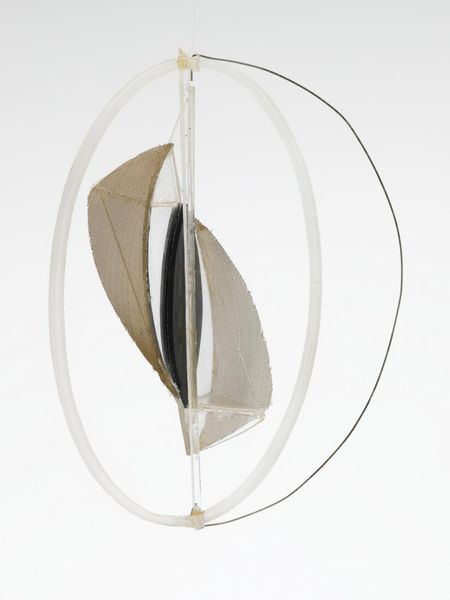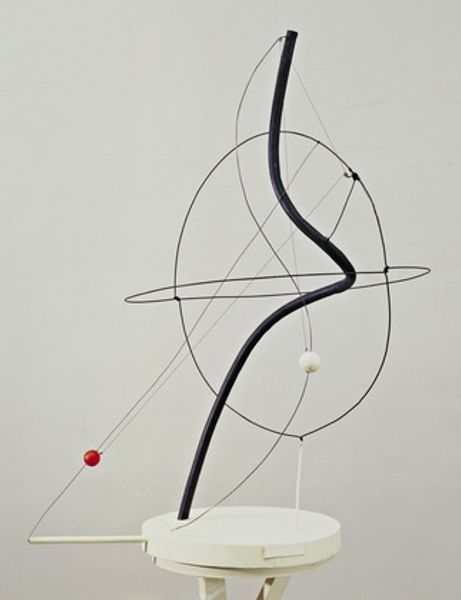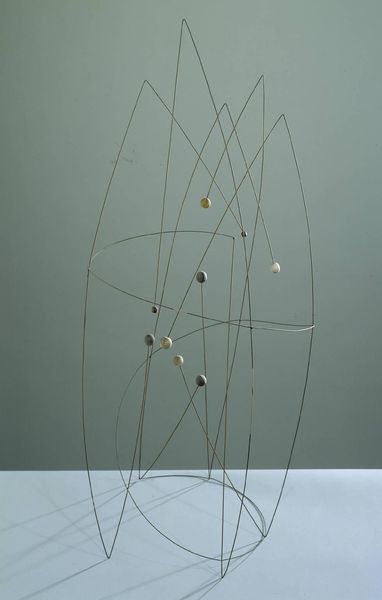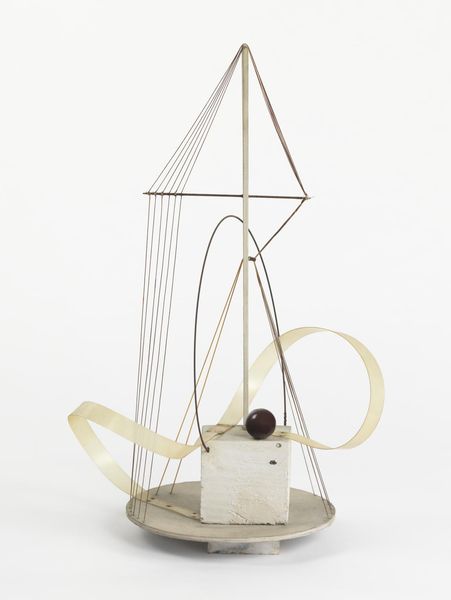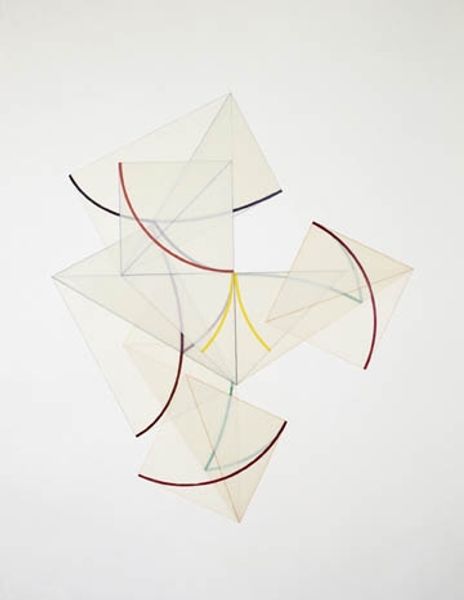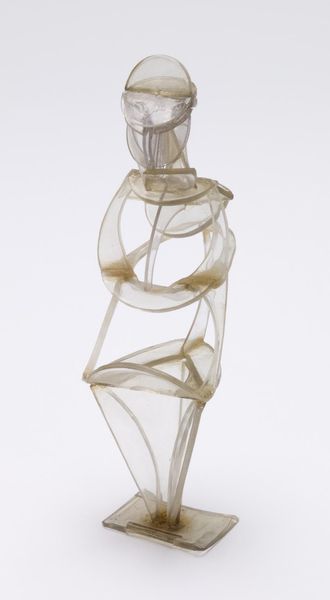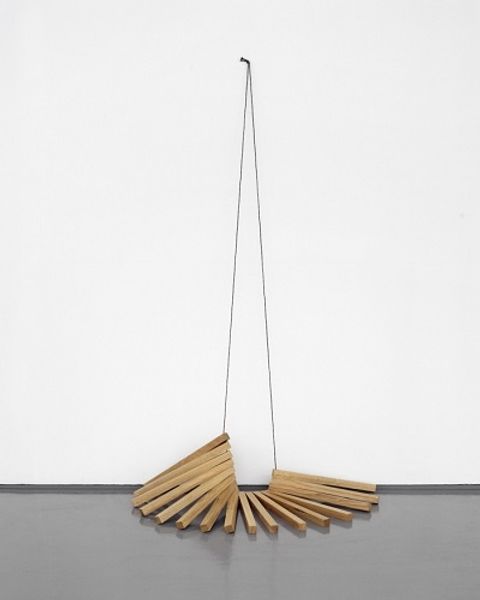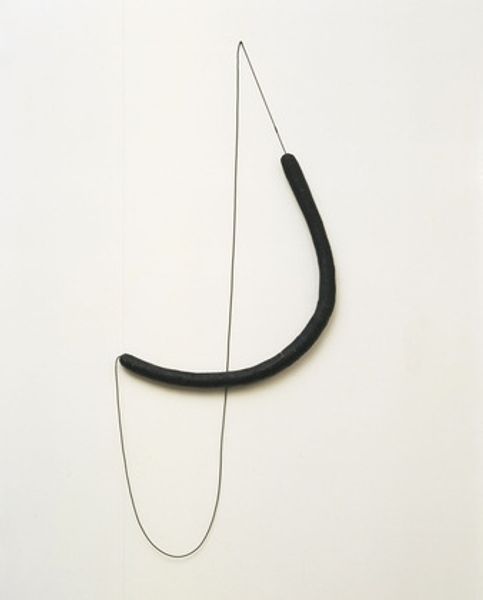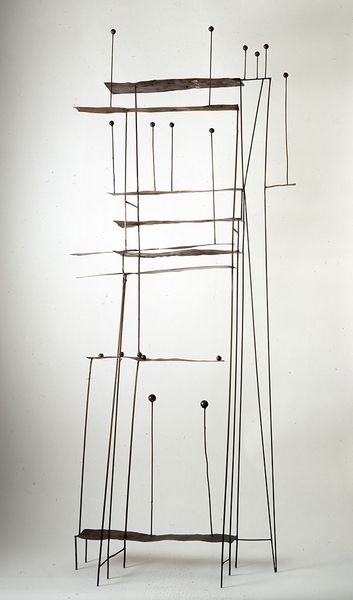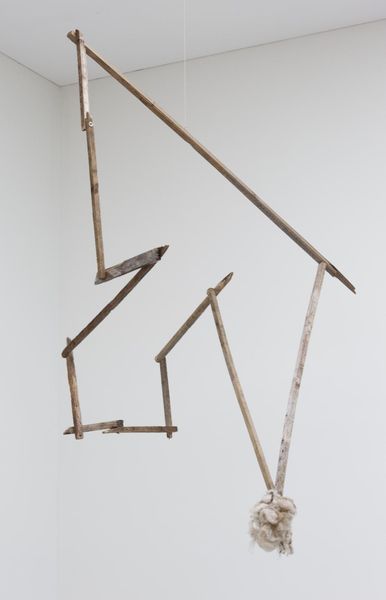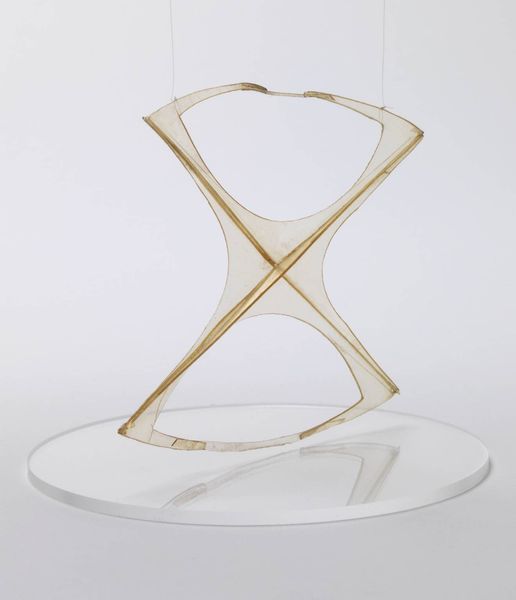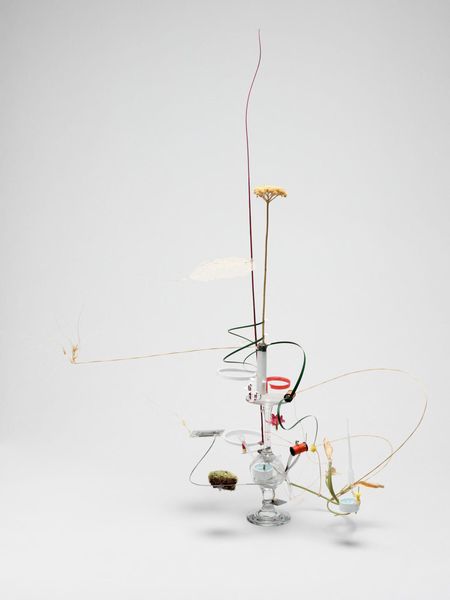
Dimensions: object: 635 x 229 mm
Copyright: © The estate of Kenneth Martin | CC-BY-NC-ND 4.0 DEED, Photo: Tate
Editor: Kenneth Martin's "Small Screw Mobile"—a delicate dance of metal—strikes me as both incredibly precise and surprisingly organic. What do you see in this work's apparent paradox? Curator: It's a lovely thing, isn’t it? A kind of controlled explosion, perhaps. Martin was fascinated by systems, chance, and movement. It reminds me of a musical score; each element precisely placed, yet capable of endless variation in the right conditions. Doesn’t it hum with potential? Editor: It really does. The idea of a score makes me think about the silence *between* the notes, or the screws in this case. Curator: Exactly! The negative space is as crucial as the brass. A reminder that stillness can be as potent as motion. What a thought! Editor: I hadn’t considered that. Now I see it as an invitation to pause.
Comments
tatebritain 8 months ago
⋮
http://www.tate.org.uk/art/artworks/martin-small-screw-mobile-t00552
Join the conversation
Join millions of artists and users on Artera today and experience the ultimate creative platform.
tatebritain 8 months ago
⋮
Martin adopted abstraction in the late 1940s, constructing his first mobiles in 1951. In 1953, he established his most characteristic form, the Screw Mobiles. The geometry resulting in spiral structures occurs naturally in shells. It was discussed in D’Arcy Wentworth Thompson’s influential book On Growth and Form, which Martin is known to have consulted. The group of British artists known as the Constructionists rejected mimetic art in favour of new (predominantly geometrical) forms, materials and techniques. Yet, naturally occurring sequences could still be the sources for such works. Gallery label, May 2012
